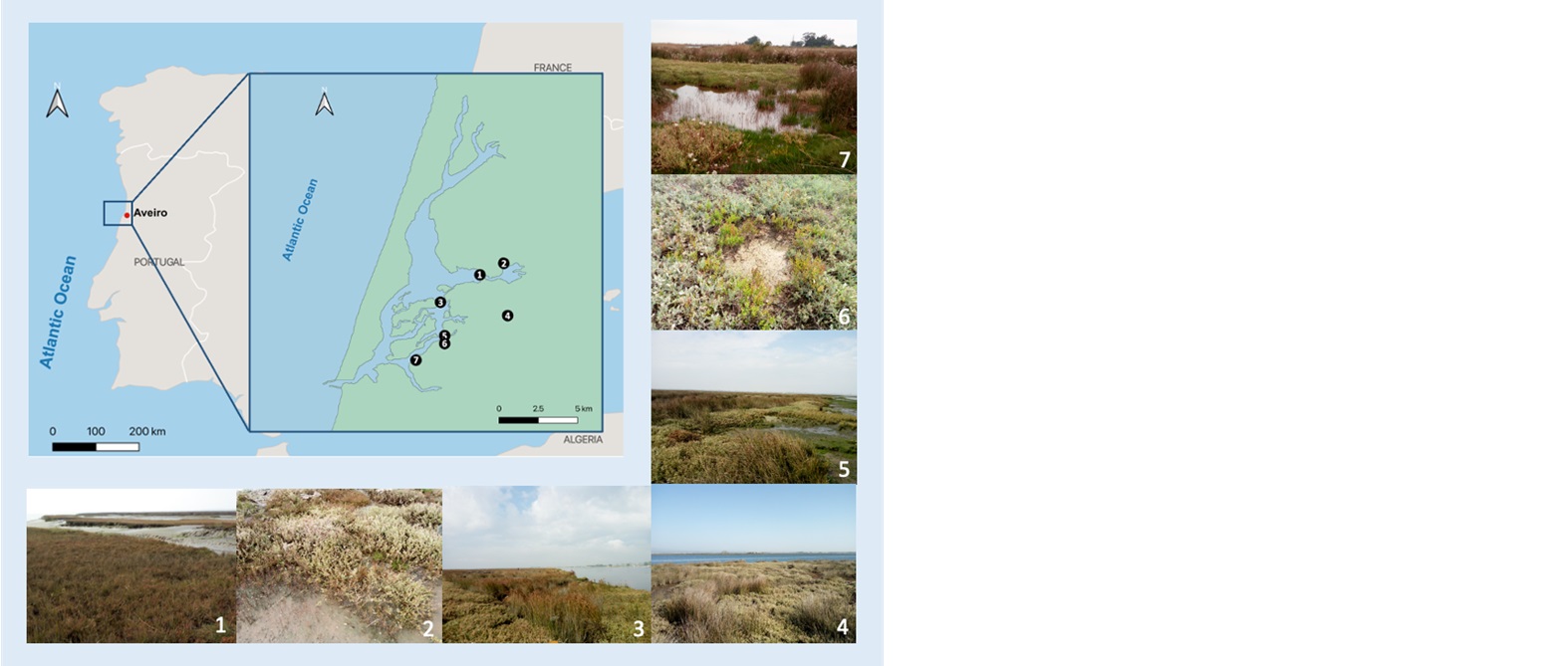Diptera communities from Ria de Aveiro saltmarshes, with new records for Portugal
DOI:
https://doi.org/10.13133/2284-4880/1499Keywords:
Coastal insects, Brachycera, Coastal biodiversity, Saltmarshes, Wetlands, FaunisticsAbstract
Ria de Aveiro costal lagoon is a socio-ecological system comprising a rich landscape mosaic of beaches, dunes, sandflats, mudflats, seagrasses, and small water channels. The lagoon is one of the largest saltmarsh areas in Portugal and Europe, supporting coastal food webs and serving as a nursery area for several species. For these features Ria de Aveiro is a Long-Term Socio-Ecological Research platform (LTSER) site and integrates the Natura 2000 network. Despite this, only recently research has been conducted regarding its entomofauna. In this study, field collections were carried in seven locations along Ria de Aveiro saltmarshes areas by sweep-netting the dominating halophyte vegetation in September 2020. A total of 222 Diptera specimens from 13 families (Asteiidae, Canacidae, Chamaemyiidae, Chyromyidae, Hybotidae, Lauxaniidae, Milichiidae, Scathophagidae, Sciomyzidae, Sepsidae, Sphaeroceridae, Therevidae and Ulidiidae), belonging to 19 genera and 23 species, are presented in this paper. From these, 1 genus and 4 species are new records for Portuguese territory. Sphaeroceridae was the most species-rich family, with Rachispoda fuscipennis being the most abundant species recorded. This study provides a snapshot into coastal insect communities in Portuguese coastal lagoons and highlights the need to continue to access insect biodiversity in these coastal areas threaten mostly by sea-level rise, coastal squeeze, and salinity.
Downloads

Downloads
Published
How to Cite
Issue
Section
License
Copyright (c) 2023 Catarina Prado e Castro, Miguel Carles-Tolrá, Vasco Santos, Olga M.C.C. Ameixa

This work is licensed under a Creative Commons Attribution-NonCommercial-ShareAlike 4.0 International License.




